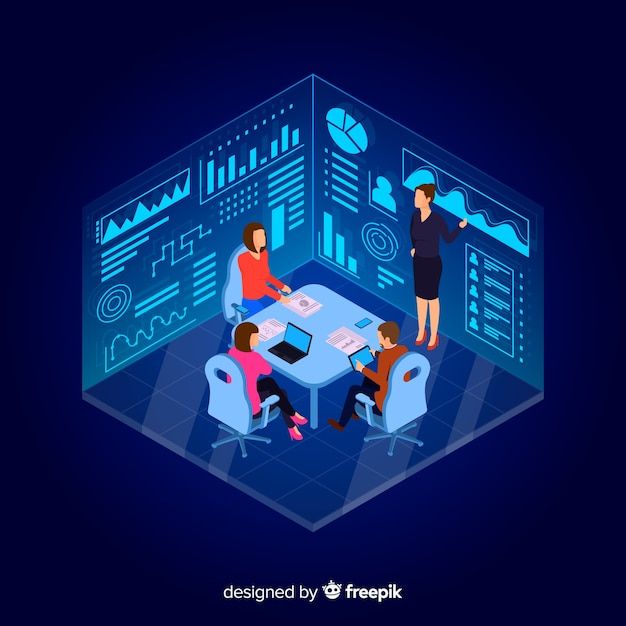Moving Beyond the AI Hype
Artificial Intelligence has been the buzzword in digital marketing for several years, often accompanied by grandiose promises and futuristic scenarios. However, in 2025, we've moved beyond the hype cycle to a phase where AI is delivering tangible, measurable results for marketers across various applications.
In this article, we'll explore five practical applications of AI in digital marketing that are creating real business impact today. These aren't theoretical use cases or experimental projects—they're proven applications that marketers are using to drive efficiency, improve performance, and gain competitive advantages.
1. Predictive Audience Targeting
One of the most impactful applications of AI in marketing is predictive audience targeting—using machine learning to identify which users are most likely to convert or have high lifetime value.
How It Works
Predictive audience targeting uses machine learning algorithms to:
- Analyze historical conversion data to identify patterns and signals that indicate high conversion probability
- Process hundreds of variables including demographics, behavior patterns, engagement metrics, and contextual factors
- Score users based on their likelihood to convert or their potential lifetime value
- Create dynamic audience segments that update in real-time as new data becomes available
Practical Implementation
Here's how marketers are implementing predictive targeting today:
- Predictive lead scoring: Prioritizing sales follow-up based on AI-generated conversion probability scores
- High-value customer identification: Allocating premium acquisition budgets to prospects who match patterns of high-LTV customers
- Churn prevention: Identifying customers showing early warning signs of disengagement and targeting them with retention campaigns
- Cross-sell opportunity detection: Predicting which existing customers are most likely to purchase additional products or services
Real-World Results
A B2B software company implemented predictive lead scoring and saw:
- 42% increase in sales team efficiency by focusing on high-probability leads
- 28% higher conversion rates from marketing qualified leads to sales qualified leads
- 22% reduction in customer acquisition costs through more efficient budget allocation
2. AI-Powered Content Creation and Optimization
AI content tools have evolved from simple text generators to sophisticated systems that can create, optimize, and personalize content at scale.
How It Works
Modern AI content systems leverage large language models and specialized algorithms to:
- Generate content drafts based on specific inputs, guidelines, and brand voice requirements
- Optimize existing content for SEO, readability, or conversion potential
- Personalize content elements based on user characteristics or behavior
- Create variations for testing at a scale impossible with human resources alone
Practical Implementation
Here are practical ways marketers are using AI for content:
- Product description generation: Creating unique descriptions for thousands of products based on structured data
- Email subject line optimization: Testing dozens of AI-generated variations to identify top performers
- Ad copy creation: Generating and testing multiple ad variations based on performance data
- Content personalization: Dynamically adjusting website content based on user segments or individual profiles
Real-World Results
An e-commerce retailer implemented AI-powered product descriptions and saw:
- 85% reduction in time required to create product descriptions
- 23% increase in organic traffic to product pages with AI-optimized content
- 18% higher conversion rates on pages with personalized content elements
3. Automated Campaign Optimization
AI-driven campaign optimization has moved beyond simple A/B testing to comprehensive, multi-variable optimization across channels and touchpoints.
How It Works
Advanced campaign optimization systems use AI to:
- Continuously analyze performance data across multiple variables and dimensions
- Identify complex patterns and relationships that human analysts might miss
- Make real-time adjustments to campaign parameters based on emerging trends
- Balance multiple optimization objectives such as volume, efficiency, and quality
Practical Implementation
Here's how marketers are implementing AI campaign optimization:
- Multi-channel budget allocation: Dynamically shifting spend across channels based on real-time performance
- Creative element optimization: Testing and optimizing individual components of ads (headlines, images, CTAs) rather than just full variations
- Bid management: Using AI to set optimal bids based on conversion probability and value for each auction
- Customer journey optimization: Analyzing and optimizing the sequence of touchpoints that lead to conversion
Real-World Results
A direct-to-consumer brand implemented AI campaign optimization and achieved:
- 32% improvement in ROAS across all digital channels
- 41% increase in conversion volume within the same overall budget
- 28% reduction in cost per acquisition for their primary conversion goal
4. Conversational AI and Customer Service
AI-powered conversational interfaces have evolved from basic chatbots to sophisticated systems that can handle complex interactions and seamlessly integrate with human agents.
How It Works
Modern conversational AI systems leverage:
- Natural language processing (NLP) to understand user queries and intent
- Knowledge bases and context awareness to provide relevant, accurate responses
- Sentiment analysis to detect customer emotions and adjust responses accordingly
- Learning capabilities that improve performance over time based on interactions
Practical Implementation
Here are practical applications of conversational AI in marketing:
- Proactive customer engagement: Initiating conversations based on user behavior signals
- Guided shopping experiences: Helping customers find products through conversational interfaces
- Automated customer support: Handling common questions and issues without human intervention
- Lead qualification: Engaging with prospects to gather information and qualify leads before human follow-up
Real-World Results
A SaaS company implemented conversational AI for customer support and lead qualification:
- 68% of customer support inquiries resolved without human intervention
- 42% reduction in response time for customer queries
- 35% increase in qualified leads through conversational lead qualification
- 380,000 annual savings in customer support costs
5. Predictive Analytics for Strategic Decision-Making
AI-powered predictive analytics has transformed how marketers make strategic decisions, moving from reactive, backward-looking analysis to proactive, forward-looking insights.
How It Works
Predictive analytics systems use AI to:
- Analyze historical data patterns across multiple dimensions and sources
- Identify leading indicators that predict future performance or market changes
- Simulate different scenarios to forecast outcomes of potential strategies
- Continuously update predictions as new data becomes available
Practical Implementation
Here's how marketers are using predictive analytics:
- Demand forecasting: Predicting future demand patterns to inform inventory and marketing decisions
- Budget planning: Forecasting expected returns from different budget allocation scenarios
- Trend identification: Detecting emerging market trends before they become obvious
- Competitive analysis: Predicting competitor actions and their potential market impact
Real-World Results
A retail brand implemented predictive analytics for inventory and marketing planning:
- 28% reduction in excess inventory through more accurate demand forecasting
- 18% improvement in marketing ROI through optimized budget allocation
- 42% faster response to emerging market trends
Implementing AI in Your Marketing Strategy
While these AI applications offer significant benefits, successful implementation requires a strategic approach:
1. Start with Clear Business Objectives
Begin by identifying specific business problems or opportunities where AI can create value:
- Define measurable goals that align with broader business objectives
- Prioritize use cases based on potential impact and feasibility
- Establish baseline metrics to measure improvement
2. Ensure Data Readiness
AI systems are only as good as the data they're trained on:
- Audit your data quality and completeness before implementation
- Implement proper data governance to ensure ongoing data quality
- Address privacy and compliance requirements from the start
3. Build the Right Team
Successful AI implementation requires a mix of technical and business expertise:
- Develop internal AI literacy across your marketing team
- Consider partnerships with specialized AI vendors or consultants
- Foster collaboration between marketing, data science, and IT teams
4. Implement Iteratively
Take an agile approach to AI implementation:
- Start with pilot projects to demonstrate value and learn
- Measure results rigorously against your defined objectives
- Scale successful initiatives while continuously improving
Conclusion
AI in marketing has moved beyond hype to deliver tangible business results across multiple applications. From predictive targeting and content creation to campaign optimization, conversational interfaces, and strategic analytics, AI is transforming how marketers work and the results they achieve.
The most successful organizations are those that approach AI strategically, focusing on specific business objectives rather than implementing technology for its own sake. By starting with clear goals, ensuring data readiness, building the right team, and taking an iterative approach, marketers can harness the power of AI to drive meaningful business impact.
As AI technology continues to evolve, the gap between organizations that effectively leverage these capabilities and those that don't will likely widen. Now is the time to move beyond the hype and start implementing practical AI applications that can transform your marketing performance.




